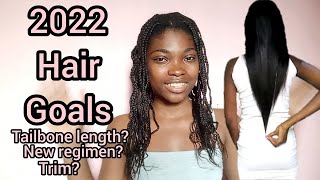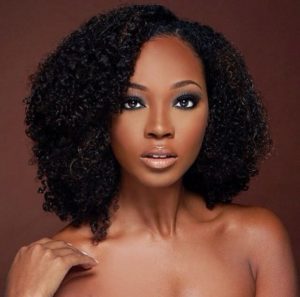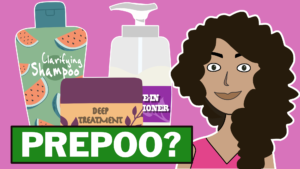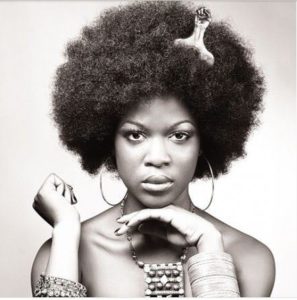How Protective Styling Could Be Doing More Harm Than Good In Your HHJ

If you have any knowledge of the diet industry you will know that majority of the people who lose a great deal of weight eventually gain it back. For that reason a lot of industry experts often say that the real battle starts after you have lost the weight and not during the weight loss process.
Thankfully when it comes to black hair growth the real battle is usually in retaining length and after length is gained often times you will find that the average ‘good regimen’ will allow us to keep it.
Enter protective styling. If there was ever a “holy grail” in black hair care, protective styling definitely fits the bill. Many long hair care gurus swear by it saying that they retain the most length with a regimen heavy in protective styling and I’m definitely of that camp too.
I got my own length with a 40-50% protective styling regimen in the first 3 years of my journey and I can attest to the fact that if done correctly, it definitely works.
But are there are times when protective styles could result in splits ends, thinning hair, balding edges and major breakage? Absolutely! To be clear, in this article I am referring to braided protective styles like weaves*, braids, cornrows or twists rather than styles that don’t require you braiding your hair.
I personally know someone who wears her hair mostly in weaves* and individual braids that she installs herself but in the years that she has been doing this, her natural hair still sits firmly at shoulder length.
Has she reached terminal length? Hardly, it’s just her braiding technique that is at fault. In a separate article I look into the best braid sizes and types that prevent hair damage while guaranteeing maximum length retention but below are 4 ways that protective styling could actually do more harm than good in your healthy hair journey (HHJ).
1. Set and forget attitude
Let’s face it, these days most of us have such busy lifestyles that the idea of not having to deal with a 2 hour detangling session weekly sounds like bliss. But this is where a lot of ladies go wrong.
They install a full weave*/set of braids and assume that their hair care responsibilities are over for a couple of months. But when you are on a quest to bring your hair to health, even while wearing braids and weaves, your hair regimen should continue as usual.
Where daily moisture with the use of creamy leave ins will not be possible while your hair is braided, use braid sprays to maintain your moisture protein balance and of course, wash and condition your hair weekly.
 2. Braiding technique
2. Braiding technique
Suffice to say, tight braiding along the delicate front hairline leads to hair loss known as traction alopecia. Along the same lines, tight braiding along the shaft of the hair keeps the hair under intense tension for the duration of the style after which during take down you will notice intense breakage and thinning.
In this case protective styling will have done you more harm than good. If you braid your own hair learn to use a light hand while braiding or if you cannot then get someone else to do the braiding for you.
Be very careful when getting your hair braided even by a professional and don’t be afraid to speak up if you think that they are braiding too tight.
3. How long?
A friend of mine told me a while ago that she’d had major breakage and matting after her last weave*. When I asked her how long she’d had the weave* in for, without batting a eyelid she said 5 months.
Come on now, it’s not difficult to see the problem there is it? When you keep a weave in for that long, the shed hair that is not able to fall out combined with the build up from months of sweat, natural oils* and products cause extreme matting.
The breakage you are likely to experience while detangling that mess will likely offset any growth you gained while ‘protecting’ your hair hence it will seem like your growth has stagnated.
For most people I would suggest 6-8 weeks as an absolute maximum for any braided protective style and only 6 weeks if you have very kinky* high shrinkage hair as this hair type is quite prone to matting.
4. Timing
When you braid your hair is every bit as important as how long you keep the braided style in for. For example, braiding immediately after relaxing your hair is a huge no no. After a relaxer your hair has lost a lot of amino acids, notably cysteine during the chemical process and until this is restored by way of a hard protein treatment, don’t even think about braiding your hair.
Natural ladies should also make sure that their moisture-protein balance is in check before braiding. Personally I like to do a light protein deep conditioning* treatment before every braiding session. Your hair is going to go through stress during braiding and fortifying it beforehand makes perfect sense.
5. Your hair type
No I don’t mean the 4a, 4b, 3c hair typing thing. I mean the thickness of your individual strands. If you have fine hair, the minimum of manipulation is what’s needed to get your hair to grow long so you may find that braided protective styles just won’t help you retain length.
If you choose braided styles, make the braids big and relatively loose and keep them in for at least a few weeks at a time to avoid excessive installs & take downs. If you have thicker strands, your hair can withstand more manipulation without excessive breakage so you will be able to get away with shorter periods between re-styling sessions.
In conclusion…
Braided protective styles are the best at keeping the ‘hand in hair syndrome’ at bay for a few weeks at a time and as such allows you to retain the most length. But if you are still experiencing breakage or thinning after braided protective styling, then low manipulation styles may be the best way forward.
Think high buns, braid outs & twist outs, faux bobs, ponytails or updo’s. You won’t be able to retain as much length as you can with braided styles so you may not be able to reach your own terminal length but you can still achieve wonderful length retention if you use low manipulation styling wisely in your regimen.




